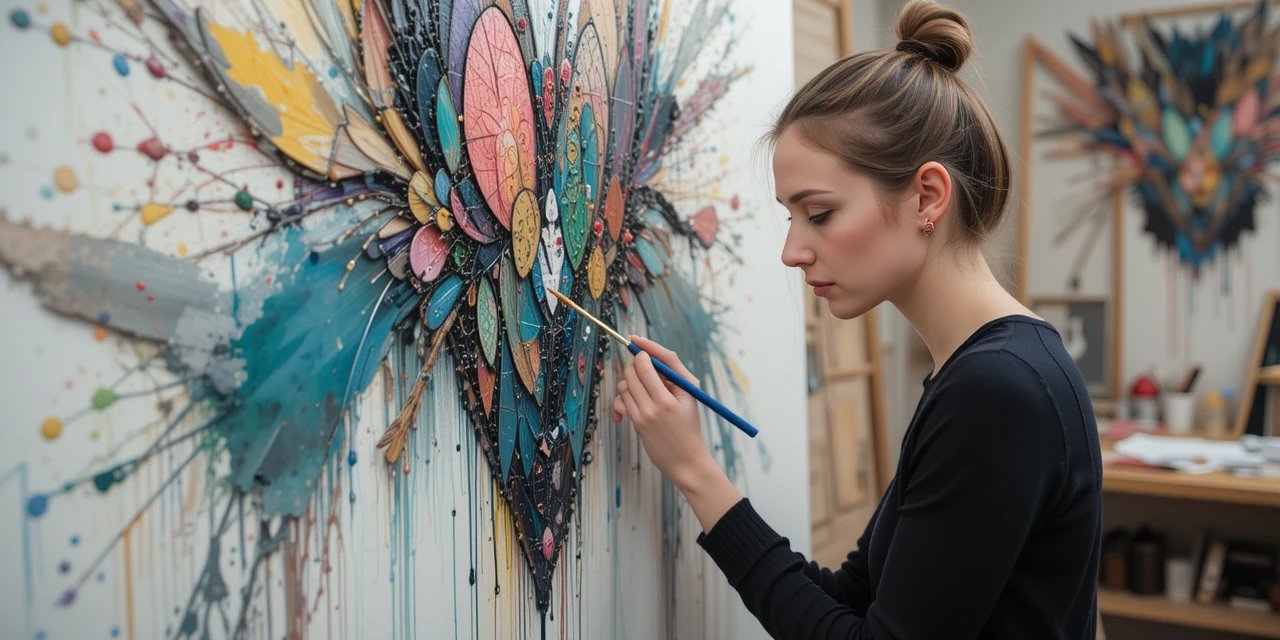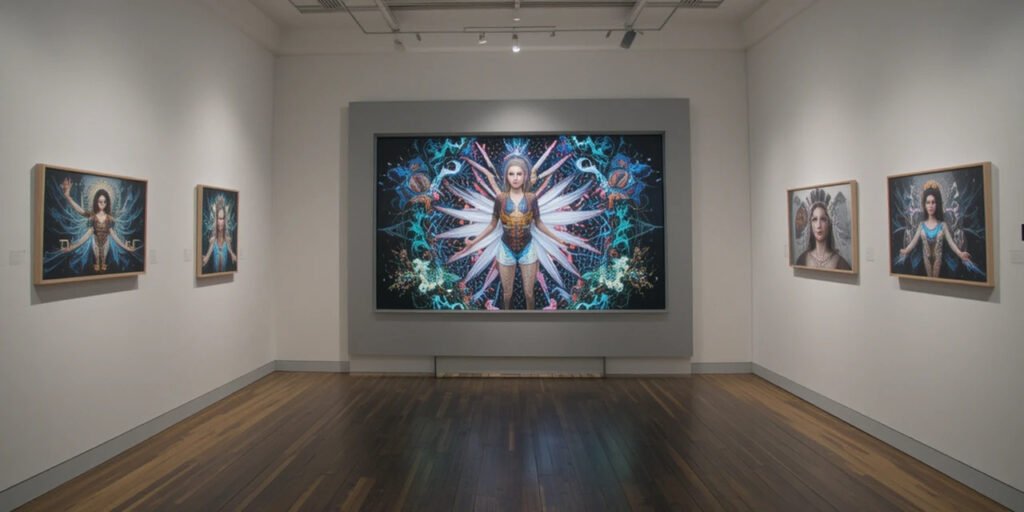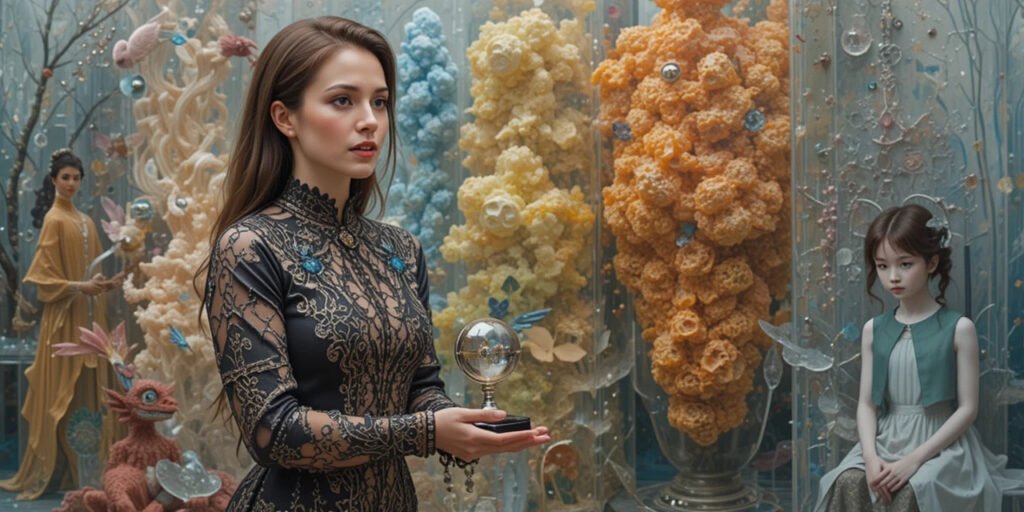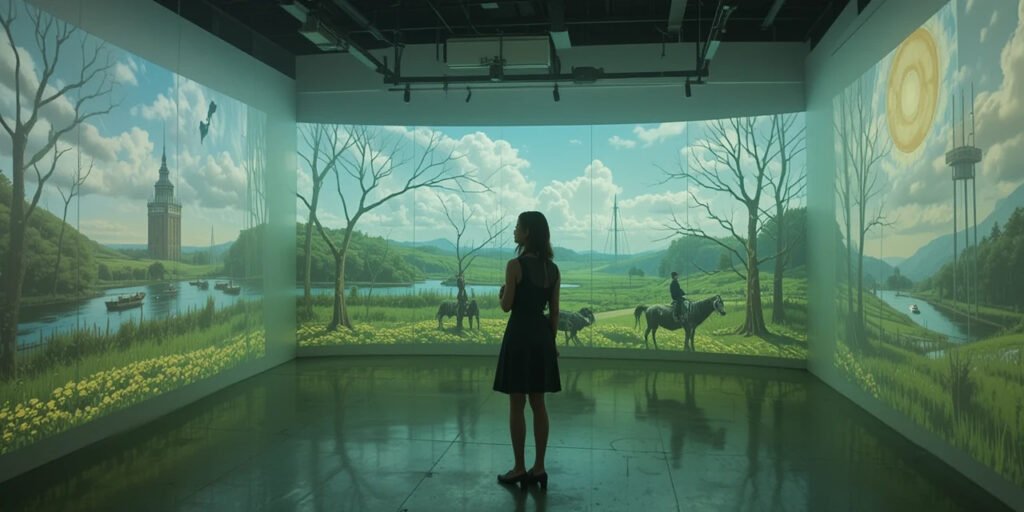
Oona Gray Seppala 7 Extraordinary Facts About This Rising Star
April 15, 2025Oona Gray Seppala has emerged as a notable figure in the contemporary art scene, blending traditional techniques with modern sensibilities. Her unique approach to mixed media installations has garnered attention from critics and collectors alike. This article explores the life, work, and impact of Oona Gray Seppala, examining how her Finnish-American heritage influences her artistic expression and how she navigates the complex world of international art exhibitions.
wanna be startin’ somethin’ lyric
Early Life and Finnish-American Heritage of Oona Gray Seppala
Born to a Finnish father and American mother, Oona Gray Seppala grew up between two worlds, spending summers in Finland and the academic year in the United States. This dual cultural identity has profoundly shaped her artistic perspective, allowing her to draw from diverse traditions and aesthetics. The stark contrasts between Finnish minimalism and American expressionism created a unique tension in her early works.
“My childhood was a constant navigation between languages, customs, and visual traditions,” Seppala noted in a 2023 interview with Art Forum. “This duality doesn’t feel like a division but rather a multiplication of possibilities.”
Her formative years were spent in Helsinki’s creative district, where she was exposed to Finland’s rich design heritage and the country’s deep connection to nature. Meanwhile, her American education introduced her to contemporary art movements and digital experimentation.

The Educational Journey That Shaped Oona Gray Seppala’s Vision
Seppala’s academic path reflects her commitment to interdisciplinary approaches. She completed her undergraduate studies at the Rhode Island School of Design, focusing on textile arts and digital media. Later, she pursued a Master’s degree at Aalto University in Helsinki, where she developed her signature style combining traditional Finnish craft techniques with contemporary digital processes.
During her time at Aalto, Seppala began experimenting with installations that responded to environmental conditions – a theme that would become central to her mature work. Her thesis project, “Responsive Landscapes,” incorporated elements that changed appearance based on humidity, temperature, and human interaction.
Mentors and Influences on Oona Gray Seppala’s Artistic Development
Several key figures have influenced Seppala’s artistic evolution:
- Maija Isola, the legendary Finnish textile designer, whose bold patterns inspired Seppala’s approach to repeating motifs
- James Turrell, whose work with light and space provided a framework for Seppala’s installations
- Digital artist Refik Anadol, whose data-driven visualizations influenced her approach to integrating technology with traditional materials
Professor Liisa Valkeapää at Aalto University played a particularly significant role in encouraging Seppala to explore the intersection of traditional craft techniques with digital technologies.

Breakthrough Works and Recognition in Oona Gray Seppala’s Career
Seppala’s breakthrough came with her 2021 installation “Memory Traces,” which was featured at the Helsinki Design Week. This immersive environment combined hand-woven textiles with projection mapping, creating spaces that seemed to breathe and respond to visitors’ movements. The installation received critical acclaim and was subsequently exhibited at galleries in Stockholm, Berlin, and New York.
Her 2022 series “Digital Landscapes” furthered her exploration of technology and tradition. These works consisted of large-scale textile pieces created using traditional Finnish weaving techniques, but incorporated conductive threads that responded to viewers’ proximity by activating subtle lighting elements embedded within the fabric.
International Recognition and Awards
Seppala’s innovative approach has earned her several prestigious recognitions:
- Winner of the Emerging Artist Award at the 2022 Nordic Art Biennial
- Recipient of the Serlachius Foundation Grant for artistic exploration in 2023
- Featured artist in Artforum’s “Artists to Watch” list in 2023
- Selected participant for the artist residency program at CERN in Geneva, exploring the intersection of art and science

Artistic Techniques and Materials in Oona Gray Seppala’s Work
What sets Seppala apart from many contemporary artists is her deep knowledge of traditional craft techniques combined with cutting-edge technology. Her process typically begins with extensive research into Finnish folk art and craft traditions, which she then reinterprets through contemporary materials and digital interventions.
Key elements of her artistic approach include:
Traditional Finnish Techniques Reimagined
Seppala has mastered several traditional Finnish craft techniques, including:
- Ryijy (traditional Finnish rug making), which she has reimagined using unexpected materials like recycled plastics and optical fibers
- Puukko carving techniques applied to unconventional materials like reclaimed industrial components
- Himmel mobile traditions expanded to create responsive kinetic sculptures
Integration of Technology
Beyond traditional crafts, Seppala incorporates numerous technological elements:
- Custom-programmed microcontrollers that respond to environmental conditions
- Thermochromic inks that change color based on temperature fluctuations
- Conductive threads that carry low-voltage electricity to activate embedded LEDs
- Motion sensors that allow her installations to respond to viewers’ presence
“I’m not interested in technology for its own sake,” Seppala explains. “I’m interested in how these new tools can help us reconnect with traditional ways of making and experiencing art.”
Environmental Themes in Oona Gray Seppala’s Installations
A consistent theme in Seppala’s work is environmental awareness, particularly regarding the fragile ecosystems of the Nordic region. Her 2023 installation “Melting Memories” addressed climate change’s impact on Finland’s winter landscapes, using thermochromic materials that visually transformed as the exhibition space’s temperature fluctuated.
This piece exemplifies Seppala’s approach to creating art that not only comments on environmental issues but actually embodies the very processes it addresses. The installation included ice forms that gradually melted throughout the exhibition period, their water collected and recycled into new elements of the piece.
“Art should not just represent the world’s problems but actively engage with them,” Seppala noted in her artist statement for the exhibition. “My work attempts to make visible the often invisible processes of environmental change.”

Watch: Oona Gray Seppala Discusses Her Creative Process
The Future Direction of Oona Gray Seppala’s Artistic Exploration
As Seppala continues to develop her artistic practice, she has expressed interest in exploring biologically responsive materials – creating works that not only react to human presence but actively interact with environmental microorganisms. Her upcoming project “Living Textiles,” scheduled for debut in late 2025, will incorporate mycelium-based materials that grow and evolve throughout the exhibition period.
“I’m fascinated by the idea of art that truly lives and changes,” Seppala explained in a recent podcast interview. “Not just kinetic movement, but biological processes that make the artwork a living entity in its own right.
This direction represents an exciting evolution of her practice, moving from responsive to truly interactive and living works. It also deepens her engagement with environmental themes by incorporating sustainable, biodegradable materials that leave minimal ecological footprints.

The Impact of Oona Gray Seppala on Contemporary Art Discourse
Seppala’s work has contributed significantly to conversations about sustainability in art production and the role of traditional crafts in contemporary practice. Art critics have noted how her installations challenge the often artificial division between “fine art” and “craft,” a distinction that has historically marginalized techniques associated with women’s work.
Dr. Helena Korpela of the University of Helsinki’s Art History department observes: “Seppala’s work performs a double recuperation – elevating traditional craft techniques to the status of contemporary art while simultaneously infusing digital practices with the warmth and tactility of handmade objects.”
In addition to her artistic practice, Seppala has been an advocate for greater environmental responsibility in the art world. She has spoken at several conferences about sustainable art practices and has developed guidelines for reducing the ecological impact of temporary installations.
Conclusion: The Continuing Evolution of Oona Gray Seppala’s Artistic Voice
Oona Gray Seppala represents a new generation of artists who move fluidly between disciplines, cultures, and technologies. Her work challenges us to reconsider traditional boundaries – between analog and digital, between craft and fine art, between aesthetic object and environmental statement.
As she continues to develop her practice, Seppala’s influence on the art world is likely to grow, particularly in conversations about sustainable practices and the integration of traditional techniques with emerging technologies. Her unique Finnish-American perspective offers valuable insights into how artists can draw from cultural heritage while engaging with pressing contemporary issues.
For those interested in experiencing Seppala’s work firsthand, her installations will be featured in upcoming exhibitions at the Design Museum Helsinki, the Louisiana Museum of Modern Art in Denmark, and the Museum of Arts and Design in New York. Art enthusiasts and collectors should keep an eye on this rising star as she continues to push the boundaries of contemporary installation art.
FAQ’S
What materials does Oona Gray Seppala typically use in her artwork?
Oona Gray Seppala works with a diverse range of materials, combining traditional Finnish textiles with contemporary elements. She frequently incorporates natural fibers like wool and linen alongside technological components such as conductive threads, LEDs, microcontrollers, and responsive inks. Recently, she has begun exploring sustainable and biodegradable materials including mycelium-based textiles and bioplastics derived from agricultural waste.
How does Oona Gray Seppala’s Finnish heritage influence her work?
Seppala’s Finnish heritage profoundly influences her artistic practice through traditional craft techniques like ryijy (rug making) and himmel mobiles. Finnish design principles emphasizing functionality, simplicity, and connection to nature are evident in her aesthetic approach. Additionally, Finland’s dramatic seasonal changes and relationship with light (particularly the contrast between summer midnight sun and winter darkness) feature prominently in her installations that explore changing light conditions.
Where can I see Oona Gray Seppala’s work in person?
Oona Gray Seppala’s work is regularly exhibited in museums and galleries across Europe and North America. Her upcoming exhibitions include shows at the Design Museum Helsinki (Fall 2025), the Louisiana Museum of Modern Art in Denmark (Winter 2025-2026), and the Museum of Arts and Design in New York (Spring 2026). For the most current exhibition information, visiting her official website is recommended.
Has Oona Gray Seppala published any books or catalogs of her work?
Yes, Seppala’s work has been documented in several publications. Her first major catalog, “Responsive Environments,” was published in 2023 following her solo exhibition at the Helsinki Design Museum. She also contributed to the anthology “New Nordic: Art and Technology in the 21st Century” (published by Thames & Hudson in 2024), which features an extensive chapter on her practice and its relationship to Nordic design traditions.
Does Oona Gray Seppala teach or offer workshops?
Seppala occasionally teaches workshops on integrating traditional crafts with digital technologies. She has been a visiting lecturer at Aalto University in Helsinki and has conducted masterclasses at institutions including RISD, Parsons School of Design, and the Royal College of Art in London. Information about upcoming workshops is typically announced through her studio newsletter and social media channels.
How does Oona Gray Seppala address environmental concerns in her artistic practice?
Environmental sustainability is central to Seppala’s practice in multiple ways. She deliberately sources sustainable materials, including organic fibers, recycled components, and biodegradable alternatives to traditional art materials. Her installations often address environmental themes directly, particularly climate change’s impact on Nordic ecosystems. Furthermore, she has developed protocols for creating temporary installations with minimal ecological footprint, advocating for responsible practices within the broader art community.

